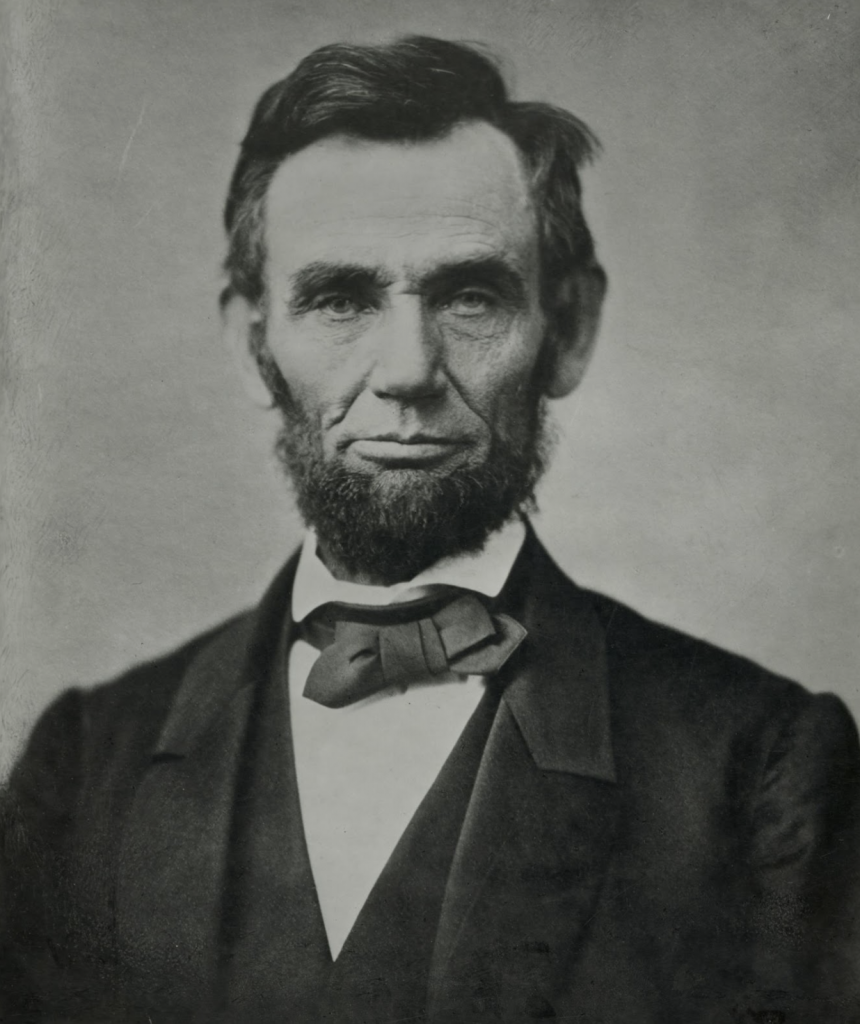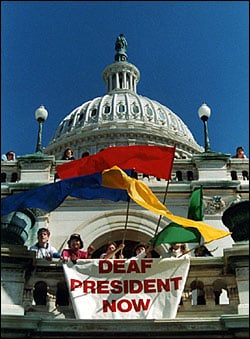Gallaudet University, founded in 1864, was the world’s first higher education institution designed specifically to serve deaf and hard of hearing students.

Located in Washington, D.C., Gallaudet began as a grammar school for deaf and blind children before evolving into a private federally chartered university. It remains the only university (in the US and World) where all programs and services accommodate deaf and hard of hearing students, though some hearing students are admitted to undergraduate and graduate programs each year. The university is named after Thomas Hopkins Gallaudet, a pioneering advocate for deaf education.
Early Years: 1856-1900


In 1856, Amos Kendall, a philanthropist and former United States postmaster general, learned of several deaf children and blind children in Washington, D.C. who lacked proper care. To help them, he had the courts declare the children his wards, then donated 2 acres of his own land to build housing and a school for the youths. In 1857, after considerable efforts from concerned citizens like Edward Miner Gallaudet, the son of American School for the Deaf founder Thomas Hopkins Gallaudet, the school opened using one purchased house and one rented house.
In 1857, the 34th United States Congress passed House Resolution 806, which established the “Columbia Institution for the Instruction of the Deaf and Dumb and the Blind’ in Washington D.C. and provided funding for tuition costs for poor deaf, mute, or blind children in the District of Columbia. Edward Miner Gallaudet was appointed as the first superintendent of the new school.
Abraham Lincoln at Gallaudet University
During the 1863–64 academic year, Gallaudet University first offered college-level courses.
In early 1864, Congress authorized the institution to confer college degrees, and President Lincoln signed the enabling legislation on April 8th. Gallaudet celebrates this date as Charter Day, commemorating the official founding of the university.
From 1864 to 1865, the collegiate department was known as the National College for the Deaf and Dumb. It was then called the National Deaf-Mute College until 1894.
In recognition of his efforts in the university’s early growth, the school promoted Edward Miner Gallaudet from superintendent to president. An elaborate inauguration ceremony was held for Gallaudet as president in June, with Laurent Clerc, America’s First Deaf Teacher, in attendance. The government provided funds to purchase 14 acres of land. Gallaudet continued advocating for expansion funds and new buildings.
A School for the Deaf
In early 1865, the 38th Congress removed the provision requiring the institution to educate the blind and renamed it the Columbia Institution for the Instruction of the Deaf and Dumb. This new corporate name for the entire institution, including the collegiate division, remained in place until 1911 when it was changed to the Columbia Institution for the Deaf.
Women Enter Gallaudet
In 1868–1869, the first students completed a full course of college studies, all three men graduating with bachelor’s degrees in June.
In the 1871–1872 academic year, the diplomas of the graduates that summer were signed by President U.S. Grant, beginning a tradition of all Gallaudet graduates having their diplomas signed by the then-serving US president.
In 1881, hearing woman Laura Sheridan inquired about Gallaudet University accepting female students, but was told deaf women were barred from entering the all-male institution.
In 1887, the school agreed to an experimental two-year trial of coeducation, making temporary housing arrangements for 11 initial female enrollees. When Gallaudet announced permanent coeducation in 1889, 5 of the original 11 women remained enrolled, with 2 graduating that year. One of those early female students was Agatha Tiegel, class of 1893, who later married famed deaf architect Olof Hanson.
In 1894, the collegiate division was officially renamed Gallaudet College from the National Deaf-Mute College in honor of Thomas Hopkins Gallaudet, President Gallaudet’s father.
1900-Present
In 1911, Congress amended the charter of the institution and changed its corporate name to Columbia Institution for the Deaf. This legal name remained until 1954, when Congress again amended the charter, this time renaming the institution Gallaudet College – the same name that had been used for the college department since 1894.
As Dean of the college for 17 years in the 1950s and 1960s, George Ernst Detmold played a major role in helping the college gain accreditation. In addition, he spearheaded the creation of new academic departments, most notably drama. Detmold even directed theater productions for Gallaudet, paving the way for the founding of the National Theatre of the Deaf.
In 1965, professors at Gallaudet University compiled the first-ever dictionary of American Sign Language signs.
In 1986, Congress amended Gallaudet’s charter once more, renaming the institution Gallaudet University.
Deaf President Now (DPN)
The selection of hearing president Elisabeth Zinser outraged Gallaudet University’s Deaf students, as the university had never chosen a Deaf person for the position. Starting on March 6, 1988, student strikes revolutionized the perception and education of Deaf culture by demanding that the next president be Deaf. This protest was known as the “Deaf President Now” protest or DPN. After a week of protests and activism, Zinser resigned and was replaced by the Deaf I. King Jordan. This Deaf President Now movement marked a turning point for Deaf rights and recognition.
Since I. King Jordan became the first Deaf President of Gallaudet University in 1988, all subsequent presidents have been culturally Deaf and fluent in American Sign Language.
Since its founding in 1864, Gallaudet University has been a vital center of education and community for Deaf and hard of hearing people, serving as a Mecca for the Deaf community.
Until next time, ta ta! 😄🤟🏻
Sources:
Information and images pulled from Brittanica, the National Archives, the Gallaudet University Archives, and Unsplash.





